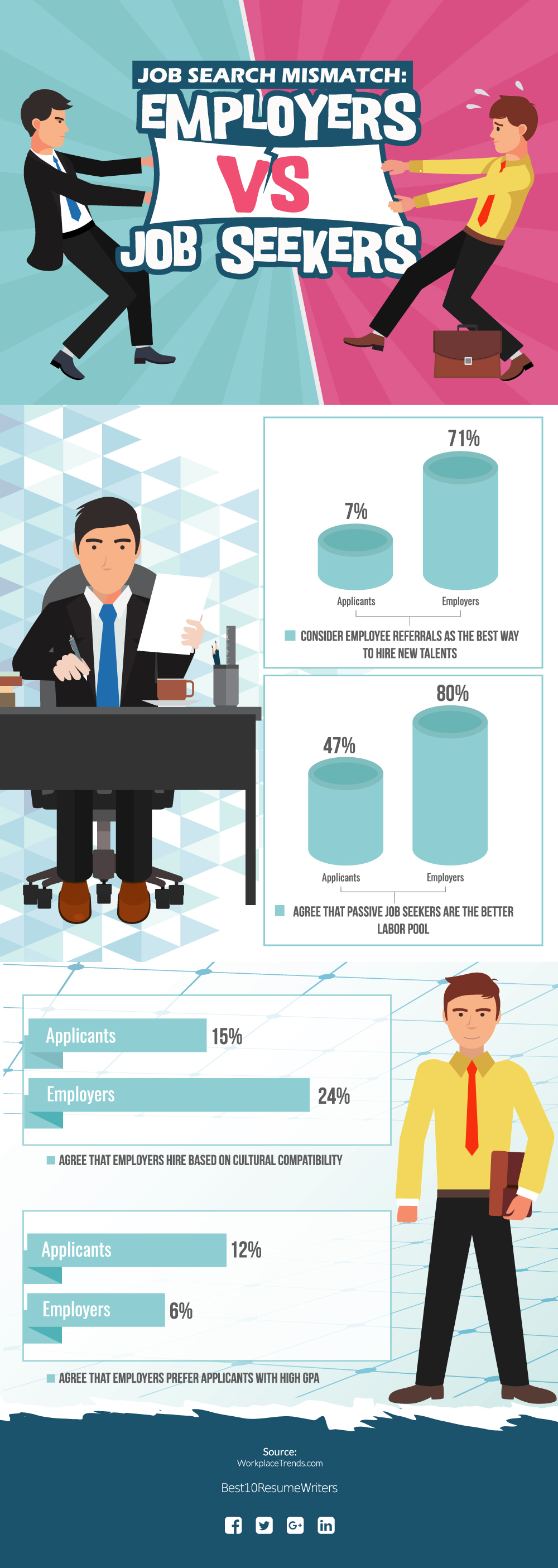Millions of Americans wonder, “Why are jobs so scarce in the United States?” Yet, you can find the headquarters of top global companies strewn around the country. The problem isn’t in the lack of jobs. Even with the large volume of applicants, 6.2 million jobs stay vacant. Since the labor market mismatch puzzles employment specialists, they urge job seekers and employers alike to rethink their tactics to prevent job search mistakes.
Post-Recession Labor Market Mismatch
The Great Recession brought massive negative impacts in the economy and to the daily lives of Americans. One of the worst effects of the event is the huge loss of job opportunities, which extended even after the end of recession in June 2009. The 18-month decline, longest in US history, recorded the highest unemployment rate since the Great Depression, with 89 million workers put out of jobs.
Sad to say, joblessness rates are still not ideal even after the economy has shown growth. Trading Economics says 7.1 million people are still without a job in the United States. This group represents the current 4.4 percent unemployment rate. Though the number is smaller than 2009’s epic meltdown, experts see frustrating mismatches between vacancies and applications. They defined the mix-ups as interest and skills mismatches, with both showing a wasted potential to improve the status of the US labor force.

Where Did It Go Wrong?
This drawback comes from job seekers’ inattention to vacancies and recruiters’ impossible demands on applicants. Labor market mismatch ensues in two ways:
- Interest mismatch – This occurs when job hunters ignore current offers to find other posts that suit their fancy.
- Skills mismatch – This happens when bosses look for rare skills in applicants.
Based on a survey led by workplace innovation experts, both recruiters and job seekers fail to respond to each other’s needs. Applicants present invalid records while employers search for odd skills. Survey data show the striking imbalance that makes it hard for employers and job seekers to match each other.

Recruiters and job hunters need to find a middle ground to solve job seeker dilemma. In the same survey, they both value internship as a credible source of work experience. Both employers and hopefuls know how great communication skills can make a job application tool more appealing, despite other stark differences.

How Can Employers Lower the Unemployment Rate?
Employers must give their workers training to make them more attuned to the changing demands in the workplace. To fix the gap, they must spot which areas need improvement than replace their workers with new ones. Recruitment is a slow and expensive method. Firms continue to evolve. Hence, they must empower their staff to embrace change. They must help them learn the needed skills and support them to achieve growth. When empowered workers perform better; hence, cutting the need to hire additional people.

How Can Job Seekers Solve the Mismatch?
Applicants must spot which new skills are in demand and try to learn them so they can meet the job requirements. In particular, the job market offers a stiff competition where applicants with the most updated skills set get a better edge over others in the field.
A great way to fill the gap in the labor market mismatch is to improve your skills set. Adapting to technological advancements will solve the problem of the aging labor force for employers and increase job seekers’ credentials to boost their job search journey.
Source: Trading Economics, Bureau of Labor Statistics, CNN Money, StLouisFed.org, Indeed Hiring Lab
Images courtesy: Pexels, Visual Hunt





